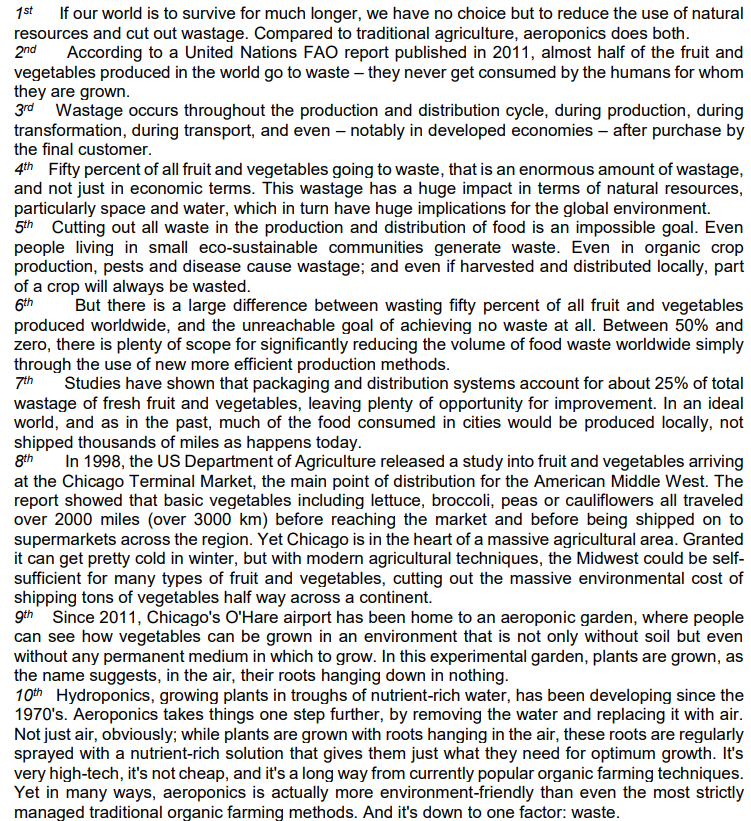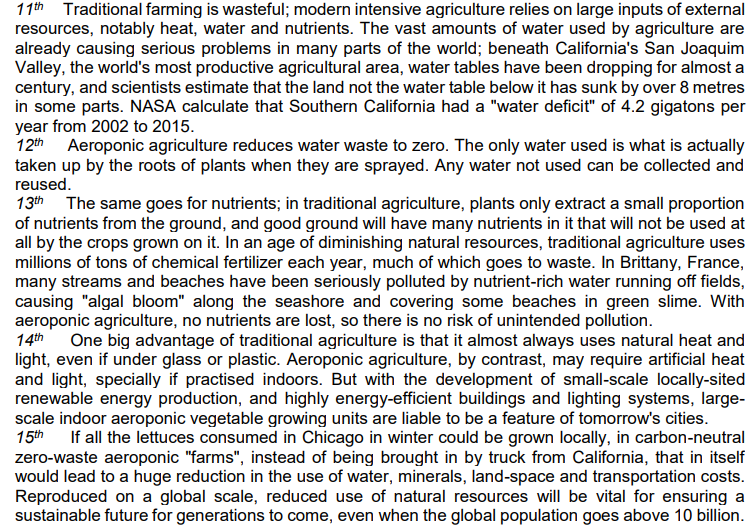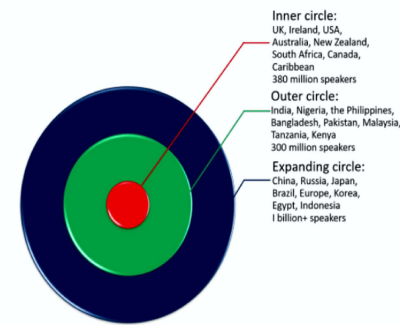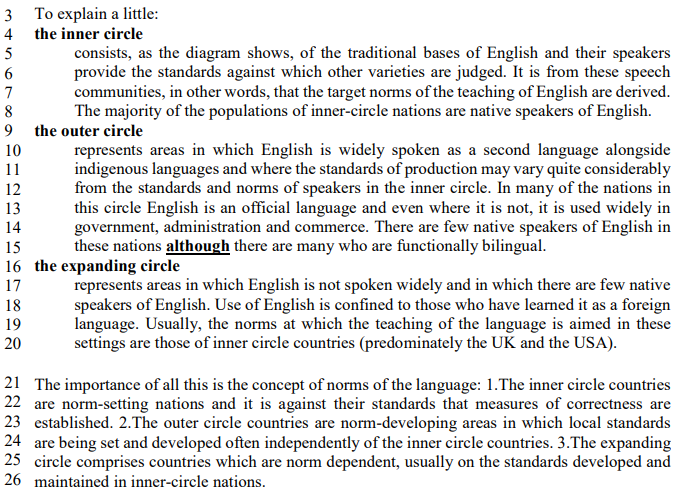Questões de Concurso Sobre inglês
Foram encontradas 17.719 questões
( ) The comparative of short adjectives such as “pretty, happy and heavy” are “prettyer than, happyer than and heavyer than”, for the vowel “y” is preceded by another consonant.
( ) The comparative of long adjectives such as “beautiful, interesting and expensive” are “beautifuler than, interestinger than and expensiver than”, as the suffix “ER” is considered to be the general rule for those type of adjectives.
( ) The comparative of short adjectives such as “grey, fey and stray” are “greier than, feier than and straier than”, for the vowel “y” is preceded by another vowel.
( ) The comparative of Latin origin adjectives such as “basic, famous and competent” are “more basic than, more famous than and more competent than”, for using “more” before adjectives like those is considered to be the most adequate rule to use.
( ) The comparative of short adjectives such as “nice, wise and late” are “nicer than, wiser than and later than”, for they are all ending in “E”, and adding only the suffix “R” at the end of those type of adjectives is the correct rule to use.
( ) The superlative of short adjectives such as “fat, thin and big” are “the fatter, the thinner and the bigger”, for they all are ending in “C-V-C” (consonant-vowel-consonant).
( ) The superlative of irregular adjectives such as “good, bad and far” are “the goodest, the baddest and the farrest”, for adding the suffix “EST” at the end of those type of adjectives is considered to be the most appropriate rule to use.
( ) The superlative of long adjectives such as “pleasant, intelligent and successful” are “the most pleasant, the most intelligent and the most successful”, for adding “most” before those types of adjectives, instead of suffixes such as “ST, EST or IEST”, is the correct rule to use.
( ) The superlative of short adjectives such as “much, some and many” is “the most”, not because those adjectives are necessarily short, but because they are all irregular and share at certain point and extent the same semantics – meaning.
( ) If it is correct to say adjectives such as “bad, good and far” are irregular, it is also correct to say that the comparative of these adjectives are “worse than, better than and farther than” in this respective order.
Plurilingualism and translanguaging: commonalities and divergences
Both plurilingual and translanguaging pedagogical practices in the education of language minoritized students remain controversial, for schools have a monolingual and monoglossic tradition that is hard to disrupt, even when the disrupting stance brings success to learners. At issue is the national identity that schools are supposed to develop in their students, and the Eurocentric system of knowledge, circulated through standardized named languages, that continues to impose what Quijano (2000) has called a coloniality of power.
All theories emerge from a place, an experience, a time, and a position, and in this case, plurilingualism and translanguaging have developed, as we have seen, from different loci of enunciation. But concepts do not remain static in a time and place, as educators and researchers take them up, as they travel, and as educators develop alternative practices. Thus, plurilingual and translanguaging pedagogical practices sometimes look the same, and sometimes they even have the same practical goals. For example, educators who say they use plurilingual pedagogical practices might insist on developing bilingual identities, and not solely use plurilingualism as a scaffold. And educators who claim to use translanguaging pedagogical practices sometimes use them only as a scaffold to the dominant language, not grasping its potential. In the United States, translanguaging pedagogies are often used in English-as-a-Second Language programs only as a scaffold. And although the potential for translanguaging is more likely to be found in bilingual education programs, this is also at times elusive. The potential is curtailed, for example, by the strict language allocation policies that have accompanied the growth of dual language education programs in the last decade in the USA, which come close to the neoliberal understanding of multilingualism espoused in the European Union.
It is important to keep the conceptual distinctions between plurilingualism and translanguaging at the forefront as we develop ways of enacting them in practice, even when pedagogies may turn out to look the same. Because the theoretical stance of translanguaging brings forth and affirms dynamic multilingual realities, it offers the potential to transform minoritized communities sense of self that the concept of plurilingualism may not always do. The purpose of translanguaging could be transformative of socio-political and socio-educational structures that legitimize the language hierarchies that exclude minoritized bilingual students and the epistemological understandings that render them invisible. In its theoretical formulation, translanguaging disrupts the concept of named languages and the power hierarchies in which languages are positioned. But the issue for the future is whether school authorities will allow translanguaging to achieve its potential, or whether it will silence it as simply another kind of scaffold. To the degree that educators act on translanguaging with political intent, it will continue to crack some openings and to open opportunities for bilingual students. Otherwise, the present conceptual differences between plurilingualism and translanguaging will be erased.
Source: GARCÍA, Ofelia; OTHEGUY, Ricardo. Plurilingualism and translanguaging: Commonalities and divergences. International Journal of Bilingual Education and Bilingualism, v. 23, n. 1, p. 17-35, 2020.
Garcia e Otheguy (2020)
Considering the excerpt "All theories emerge from a place, an experience, a time, and a position, and in this case, plurilingualism and translanguaging have developed, as we have seen, from different loci of enunciation.", analyze the statements below:
I.According to the text, plurilingualism and translanguaging have things in common but also have controversies.
II.If you had to turn this excerpt into reported speech "plurilingualism and translanguaging have developed from different loci of enunciation" you would have the following result: "García and Otherguy said that plurilingualism and translanguaging had have developed from different loci of enunciation".
III.The second sillable of the word 'loci' can be pronounced as 'sa?', but also can be pronounced as 'ka?'.
It is correct what is state in:
Text CG1A2-II
The enormity of the global climate crisis is so vast that individual actions may seem meaningless: can installing LED lighting in my home or keeping my car tires inflated really help save the polar bears?
First coined by Portland, Oregon-based writer Emma Pattee, the climate shadow aims to paint a picture of the full sum of one’s choices — and the impact they have on the planet.
In an article she wrote in 2021, Pattee detailed her concept for measuring an individual’s impact: “Your climate shadow is a dark shape stretching out behind you. Everywhere you go, it goes too, tallying not just your air conditioning use and the gas mileage of your car, but also how you vote, how many children you choose to have, where you work, how you invest your money, how much you talk about climate change, and whether your words amplify urgency, apathy, or denial.” The larger the shadow — the greater an individual’s impact on doing good for the planet.
In other words, rather than incentivizing purely individual actions, your climate shadow grows when those actions inspire others, knowingly or otherwise.
Kieran Mulvaney. Climate shadow is what really matters.
National Geographic (adapted).
Text CG1A2-II
The enormity of the global climate crisis is so vast that individual actions may seem meaningless: can installing LED lighting in my home or keeping my car tires inflated really help save the polar bears?
First coined by Portland, Oregon-based writer Emma Pattee, the climate shadow aims to paint a picture of the full sum of one’s choices — and the impact they have on the planet.
In an article she wrote in 2021, Pattee detailed her concept for measuring an individual’s impact: “Your climate shadow is a dark shape stretching out behind you. Everywhere you go, it goes too, tallying not just your air conditioning use and the gas mileage of your car, but also how you vote, how many children you choose to have, where you work, how you invest your money, how much you talk about climate change, and whether your words amplify urgency, apathy, or denial.” The larger the shadow — the greater an individual’s impact on doing good for the planet.
In other words, rather than incentivizing purely individual actions, your climate shadow grows when those actions inspire others, knowingly or otherwise.
Kieran Mulvaney. Climate shadow is what really matters.
National Geographic (adapted).
I In the fragment “when those actions inspire others”, the word “others” means other people.
II The excerpt “how you invest your money” could be correctly rewritten, in the passive voice, as how your money is invested.
III Emma Pattee has painted a picture of the full sum of one’s choices.
IV Based on the text, it is correct to affirm that Emma Pattee lives in Portland.
Choose the correct option.
Drones are an integral part of the defense and supply-chain industry. However, their prowess and versatility extend beyond these sectors. As the demand for UAVs (unmanned aerial vehicles) continues to increase, the drone market is now estimated to be valued at over 127 billion dollars.
These uncrewed aircrafts can potentially develop numerous sectors, including transport and travel, exponentially. This is primarily due to their remarkable evolution of collision-avoidance technologies through computer vision and artificial intelligence, allowing them to operate autonomously.
The dynamic innovation of drone transportation can positively impact emergency services by decreasing emergency response time, offering valuable data from inaccessible regions, and identifying victims via thermal imaging.
Though the concept of a UAV emerges from being “unmanned,” its autonomous power can be used to create functional, personal transportation. Well-known companies like Uber, Airbus, and Boeing are constantly working on developing self-flying drones that can take people from one place to another.
In conclusion, drone transportation has a lot of untapped potential beyond supply chain and security surveillance. Whether it is for emergencies, luxury, or space exploration, the future is optimistic for the travel industry.
Internet: <www.skygrid.com> (adapted).
Based on the previous text, judge the following item.
The second sentence of the text can be correctly rewritten as
Therefore, their capability and flexibility surpass the
confines of these industries.



Internet: <sciencedaily.com> (adapted).
Considering the information stated in the text above and the vocabulary used in it, judge the following item.
The verb “realized” (first sentence of the text) could be replaced with reached a milestone without changing the meaning of the sentence.
I. “I will be there at nine o’clock” is in the immediate future.
II. “The Second War ended in 1945” is in the simple past.
III. “At this same time tomorrow, I’ll be travelling” is in future progressive.
IV. “How many symphonies did Mozart compose?” is in the simple present.
V. “She hasn’t seen that film yet” is in the present perfect progressive.
Which ones are correct?
INSTRUÇÃO: Leia o texto a seguir para responder à questão.

Disponível em: https://twistedsifter.com/2012/05/a-better-place-comic-strip/. Acesso em: 23 set. 2023.
No último quadrinho da charge, um personagem afirma: “So technically they’re in a better place by default.”. O que
esse personagem quis dizer?

We can infer that the scientists did not like the way microplastics were distributed in many organs of the body.
TEXT II – Tema: Variação linguística no ensino-aprendizagem de inglês
INTERNATIONAL VARIETIES OF ENGLISH
1 The most familiar way to classify the varieties of English around the world was developed by
2 Kachru (1985) and looks like this:


(Available from: https://www.eltconcourse.com/training/common/variety.html Accessed on July 5 , 2023)

Chou has witnessed other programmers considering out loud the innate impossibility of women being great coders.
In reading process, the strategy of finding the ‘headword(s)’ (noun in Morphology; and core argument in Syntax - as subject or object main word), and the ‘modifier(s)’ (words that modify the headword) is (are) important because it (they) can define the pluralization or not of a verb, and they can also provide the complement of a verb. The combination of H (headword) and M (modifier) is called nominal group.
From the underlined fragments, analyze the headword of each nominal group and mark the correct alternative. “the communication /develops /new priorities /to reflect /those contexts”.